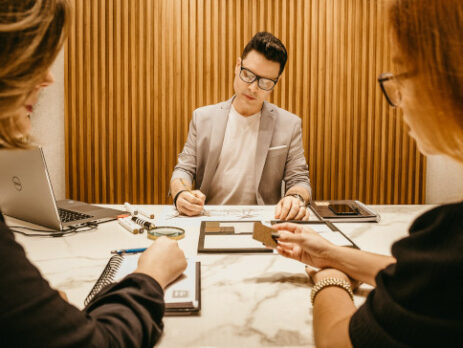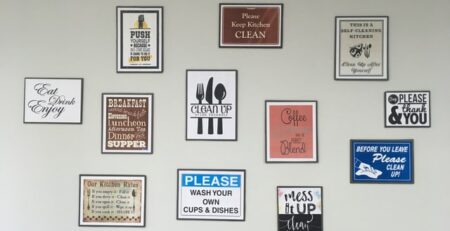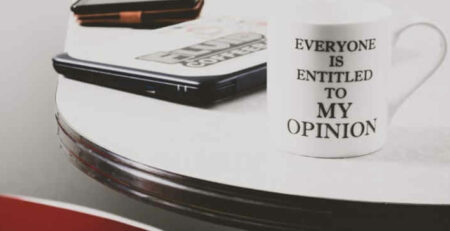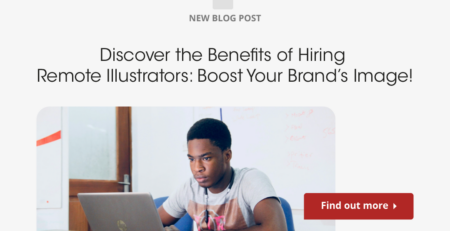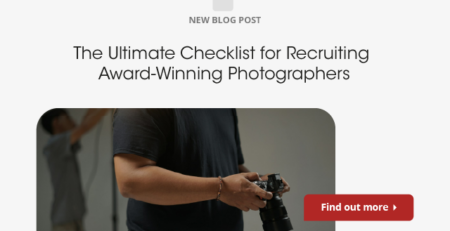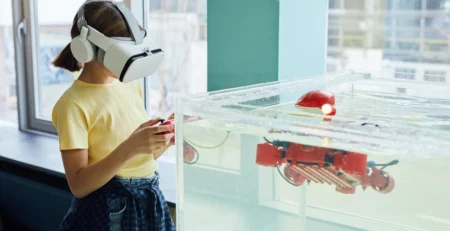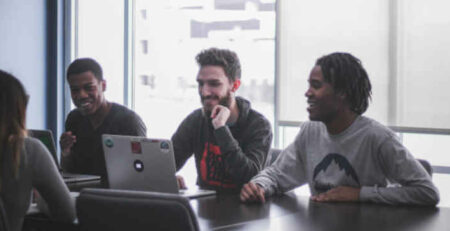Crafting a Remarkable Case Study for Your UX Portfolio: A Beginner’s Guide
Case studies are an essential part of any design portfolio and can be the most illustrative aspect of the application process when used correctly. Too often, though, a UX portfolio will be submitted with case studies that come up short. Rather than giving prospective employers a sense of past projects and problem-solving, candidates with underwhelming case studies run the risk of boring or even confusing the same people they should be informing.
Companies and creative staffing agencies review tons of UX portfolios. Just like you would with your resume or LinkedIn profile, you should create case studies that catch the eye and continue piquing interest throughout. The aesthetics of the case study combined with the organization of the information within it both play a part in the readability and appeal of case studies.
One common piece of UX portfolio advice is that building an appealing case study is just like telling a story. It’s vital to be clear about the main points of a case study, how your design skills and creativity came into play, what problems you faced during the project, and the takeaways and impressions you were left with after the project was completed. Many designers focus too much on the tech they used to complete certain work rather than presenting concrete information about what they learned and how they applied their knowledge of design and design tools.
Unlike resumes, interviews, or letters of recommendation, case studies are great long-form informational tools. While it’s possible to fit way more into a case study than you can in other parts of your portfolio, it’s also important to cut out all the fluff. The most valuable case study will use language that is direct and spares unnecessary detail.
Indispensable UX design tools like usability tests and user personas are generally showcased in case studies. The candidate’s ability to identify pain points and create effective and concise wireframes are important. Organizing the information in a case study so that the full implementation of the design can be tied back to theories and ideas in the wireframes which are based on thorough user research will give companies and creative staffing agencies the clearest picture of the candidate and their working style.
Of all the UX portfolio advice out there, creating several detailed and interesting case studies is some of the most important guidance for designers. Read on if you’re looking for UX portfolio tips that will help you build the best case studies that will catch prospective employers’ attention.
What is a Design Case Study?
A UX portfolio needs more than just examples of past work. Hiring managers and recruiters want to see much more than just polished examples of past design work. At icreatives, for example, we know user-centered design is iterative and requires research before ideas can be formulated. The best design case studies demonstrate all of the steps (and missteps) that lead to a finished product.
Case studies are the backbone of a UX portfolio. They tend to be longer than other elements of the UX portfolio, usually between 1,000 and 2,000 words depending on the level of detail required to completely describe the project. The case study generally runs linearly through the design process. Once you know the elements of a case study, you can begin writing yours with a specific tactical purpose in mind.

UX Portfolio Advice: Elements of a Case Study
What should you include in a case study? It’s important to clearly and concisely demonstrate how you solved a design problem and what led you to the ideas that eventually became the final design. However, keep in mind that hiring managers and recruiters also want to see how you created value for the user and the company with your design. If you were part of a team, it’s imperative to highlight your contribution to the finished product.
One of the most frequent UX portfolio tips is to tell a story with your case studies. Here are a few of the key elements you can use to craft a narrative:
1- The Initial Issue
Choose a question, problem, or shortcoming in an existing design as your jumping-off point. It’s not enough to say a design is simply lacking – there should be a clear gap between the users’ desires and what the functionality of the product allows them to do. For example, an app whose main function is group seminars or team interaction should have clear ways to send invitations, see who else is in the meeting, and have some element of screen sharing or live documents available.
Whether you are new and doing unpaid work so that you can make a UX portfolio or you have tons of experience to choose from, the problem statement that begins your case study should demonstrate your knowledge, curiosity, and creativity. It should also generate interest from whoever is reading it so that they are driven to continue reading.
2- Describe Your Methods
In a brief section, give a fast rundown of the particulars of the project. This includes team size, total duration, materials and design tools used, and any limitations. Writing this kind of summary gives hiring managers and recruiters the ability to very quickly ascertain whether the case study was truly challenging or a walk in the park. Designers face many more problems than just the team size or the time limit on their projects, so make sure you aren’t giving the wrong impression when you craft these short sections or bullet points to show which methods you employed.
3- Center the User
UX design is all about the people who use the product. It’s not about ideal users, but people who actually have experience with the product or service. Once you have introduced the central problem a project will address and outline the general methods used to create solutions, it’s time to talk about who the users were, how you reached out to them, and what information you found.
Be prepared to explain why you asked the questions you asked and outline intentions in the formulation of the research conducted on users. The likes and dislikes of the users are two of the main things that must be addressed at this stage, but it’s equally important to find out all the characteristics of the users. Whatever you were looking for with your initial user research is likely to be taken as an indication of how you will view users in the future, so make sure it’s clear that you have taken the proper degree of care for the user and make sure that is clear from your case study.
4- Detail Your Findings
After you describe the methods you used to survey and interview users, explain what you found out. This will help the reader have some evidence of your thought process. It’s also the first time you can highlight your insights. Conclusions drawn from the data received are a great way to show your creativity and continue generating interest in the reader by indicating new or intriguing findings.
Make sure your interviews and surveys of the users aren’t passive. Their responses are essential, of course, but to get usable findings you should be wielding your design knowledge to create some possible takeaways at this stage. That doesn’t mean you should ask them leading questions, but it is important to arrive at actionable and insightful conclusions here. Try to describe what the users are looking for based on the research.
5- Usability Tests
Interviews and surveys are fine to begin user research, but you’re going to want more information after that. Apply your conclusions from the data to concentrate usability tests on certain design elements. There’s a reason this step cannot be completed until data from surveys and interviews has been completed. How else would you know which parts of the design to stress test at this stage? Just like the conclusions from the data, implementing clever design tests can demonstrate versatility and imagination.
Usability tests are also one of the most characteristic tools of UX designers. For this reason, many hiring managers with experience reading through UX portfolios will concentrate on the methods and results of these tests.
6- Valuation and Brainstorming
Once you have all of this information about the user, describe how you assigned value to different design elements and functionalities based on the users’ priorities discovered in the research. Return to the initial problem statement here. This is the point where the reader will be able to see how and why your initial issue was chosen and that will give the narrative of the case study continuity. As problems arise at this stage, the reader will also identify more with the struggle of the search for a solution.
It’s important to outline not just the ideas that did work but also the ones that didn’t pan out in the end. The brainstorming stage is centered around your thought process so it’s important not to leave anything out that can demonstrate how you think. If you only include the ideas that worked, the case study will feel incomplete and the reader will want that additional information.
7- Prototypes
Your case study will finally get to showcase some deliverables at this stage. These should be physical manifestations of ideas alluded to in your initial problem statement and research findings. The application of valuations and ideas discussed in the brainstorming stage needs to be apparent in the various design elements of the prototypes. These drawings might also display how design iterations fit into your work process.
Highlighting shortcomings in initial prototypes is another good way to show your thought process and indicate that you don’t cherish your design idea so much that you won’t get rid of them if they simply aren’t working. If you don’t have time for as many prototypes as you would have liked, it’s okay to indicate that and explain what constraints led to that limitation.
8- Tests, Iterations, and Findings
Testing prototypes and conducting further usability tests typically occurs next. This is the growth section of the case study and it’s the most visual section most of the time. Deliverables and drawings should always be recorded and retained for use in this part of the UX portfolio. The overall process of design is most apparent in this section. Communicating findings and explaining how they affected the next iteration of the prototype will make this section one of the more interesting parts of a discussion during a job interview.
9- The Final Product
Finally, you can show the final iteration of the product and explain how everything else in the case study led to this point. It’s sort of like the conclusion or the last act of a play. When you write a case study, make sure there’s a logical trend toward the conclusions in the final product so that everything flows nicely. It will be more interesting for the reader and much simpler to explain in a job interview.
10- Lessons & Takeaways
You might find it helpful to explain what you learned and how you grew during work on a given project. This will give the employer a much clearer vision of you as a person. They’ll already have an understanding of your design process from the rest of the case study if you followed these UX portfolio tips, but you can give it more personality with this final section. Concentrate on highlighting the final value created for the product and company and write out some ideas for how to generate these improvements more effectively on future products.

Common Mistakes in UX Case Studies
Many who look for UX portfolio advice fixate on deliverables and the most standout elements of their different designs. This won’t give prospective employers a good enough idea of the applicant as a designer. They’ll want to have a complete picture of what it might be like to have you on the design team. Here are a few UX portfolio tips that will help them get that picture:
- Proofread Constantly
Always check back over your work and get qualified colleagues and friends to review the case study and other sections of your UX portfolio before you submit it. It might feel finished, but it’s always possible some mistakes were made or certain gaps in information overlooked. If you want to build the strongest narrative in your case study, getting some peer review will help.
- Not Enough Conclusions
Prospective employers want to see how you were able to employ new evidence throughout the case study, not just at the end. This is one of the best ways to continue generating interest and to showcase your design ingenuity. It’s one thing to come up with a sleek design, but UX designers have to go a step further and come up with clever functionality that can help solve problems and make the final product more appealing for the user.
- Don’t Be Afraid to Repeat Yourself
An overly long or wordy case study won’t have a positive effect on prospective employers, but that doesn’t mean you have to summarize. To create a powerful narrative, circling back to initial ideas and how new information changes them is a great way to demonstrate flexibility, imagination, and continuity throughout the project.
- Using Real Deliverables and Photos
Whenever you work on a project, save real drawings and prototype interactions for use in later case studies. Many designers forget to do this and wind up with nothing to show in the case study except the final product. The reader will want to see the entire process and, especially for non-designers, deliverables like personas and wireframes will help them understand how the candidate solved a design problem and what kind of work can be expected from them in the new position.
Conclusion:
There are many UX portfolio tips out there but none is as important as crafting a cohesive case study with a strong internal narrative. Unlike most UX portfolio advice, guidelines to perfecting the creation of intriguing case studies concentrate on demonstrating the imagination and personality of a designer. They also help explain design to people who aren’t on the design team and show that a candidate has the communication skills required to do so.
Effective UX design centers the user, but companies will want to see how improved design for the user creates value for the company. Walking them through a few past projects with the case studies in your UX portfolio is the best way to show them exactly that.
If you’re looking for work as a UX/UI designer, join the icreatives team today!

